The Order of the White Moon Goddess Galley presents
Benzaiten
A Level I final project
By Diana Fox
for Sisters of the Rising Moon School
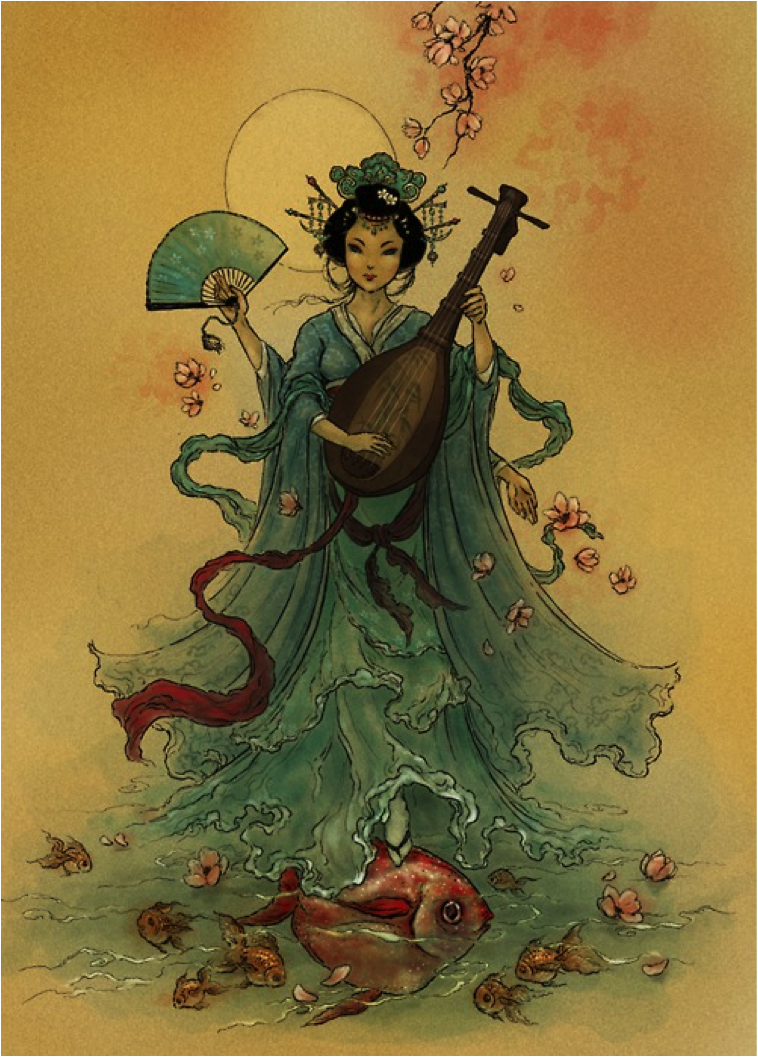
Benzaiten used with permission from La Petite Mascarade at https://www.etsy.com/shop/LaPetiteMascarade
History and Associations
Benzaiten or Benten is one of Japan's Seven Lucky Gods. She is the Japanese manifestation of the Hindu river goddess Sarasvati. Her worship began in Japan sometime between the sixth and eighth centuries. She is venerated by both Shinto and Buddhist followers. Benzaiten is one of the most honored deities in Japan. Almost every city contains a shrine in her honor, often next to a body of water.
Benzaiten is a protector-deity and goddess of wealth, luck, and beauty. She is associated with anything that flows including ki, words, music, water, resources, creative arts, and knowledge. As a water goddess, she is often called upon to bring rainfall for bountiful harvests and to protect coastal towns. Her sacred creatures include dragons, turtles, white foxes, and snakes. White is her sacred color and her animal messengers often appear in this color. She is also associated with boats, salt water, and guitars. Benzaiten is often depicted with a biwa (lute). She is sometimes portrayed in her protector's role with eight arms, each wielding a different weapon. She wears a jewel that grants wishes on her robes. It is sometimes carried by the fox or dragon that accompanies her. Benzaiten is venerated on New Year's in hopes that she will bring good fortune. This is especially true during the year of the snake. Other snake zodiac days are also sacred to her.
Given her various associations, Benzaiten has been popular with different groups during different periods. She was venerated by the samurai as the Happi Benzaiten, the defender who wields eight weapons. Her association with water makes her the favorite of those who live in coastal and agricultural communities. Around the 15th century, the characters spelling her name changed to include one that meant "wealth". At this point she became associated with good fortune and the Seven Lucky Gods. In the Edo Period (1603-1868), this association as well as those of arts and business made her popular with merchants, geisha, and artisans. Today, she is seen as a muse of the arts, a protector of the coasts, and an inspiration to students. She also blesses some who come to her in search of love. Along with her fellow Lucky Gods, she bestows prosperity on those who seek it, especially during the New Year.
Stories and Legends
The Seven Lucky Gods
Every year on New Year's Eve, Benzaiten and the other Lucky Gods bring their Treasure Ship to port to share happiness and prosperity with the people. Children place images of the gods aboard the treasure ship under their pillows to welcome lucky dreams. Those with lucky dreams are said to have good fortune for a whole year so long as they do not share their dreams with anyone else.
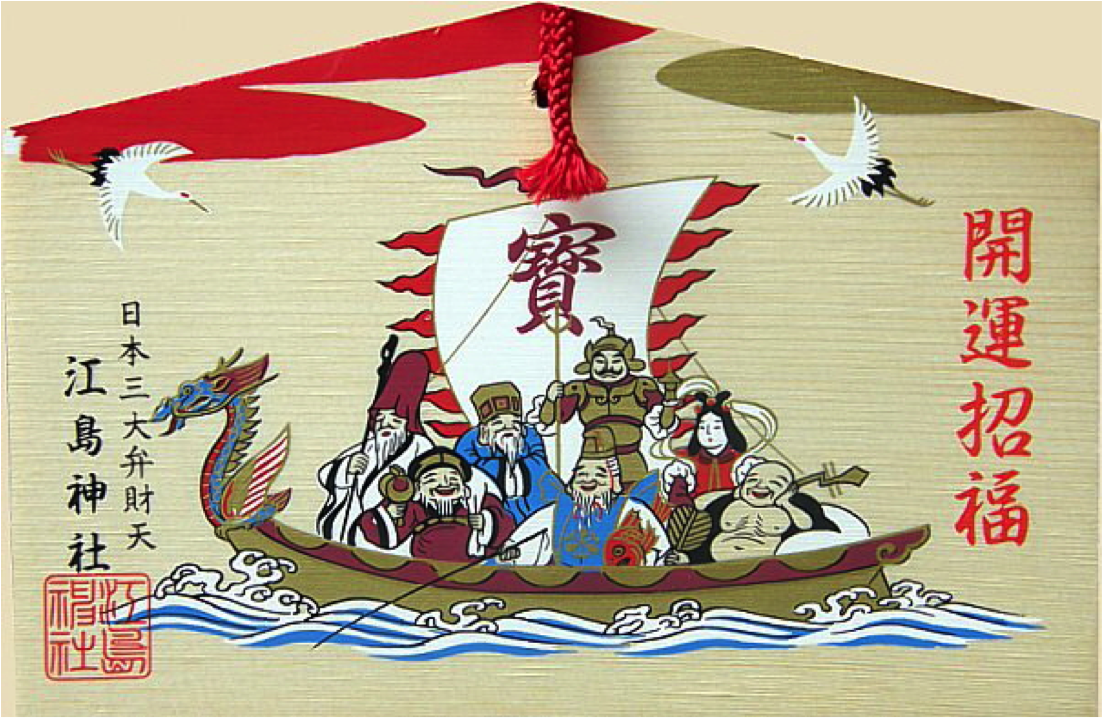
Seven Lucky Gods votive tablet. Copyright Mark Schumacher. http://www.onmarkproductions.com/html/seven.shtml
Benzaiten and the Dragon
A dragon once ravaged a village in Kanagawa. Benzaiten swooped down from heaven and engaged the dragon. She agreed to marry him, and by her influence, the dragon ceased his wicked ways, and peace returned to the region. The island of Enoshima rose up in the place in which the dragon's lair once rested. There, three shrines exist for Benzaiten and her husband. Couples sometimes visit these shrines in hopes of becoming lucky in love. Lovers should be careful not to offend Benzaiten, however, as the goddess has sometimes been known to become jealous.
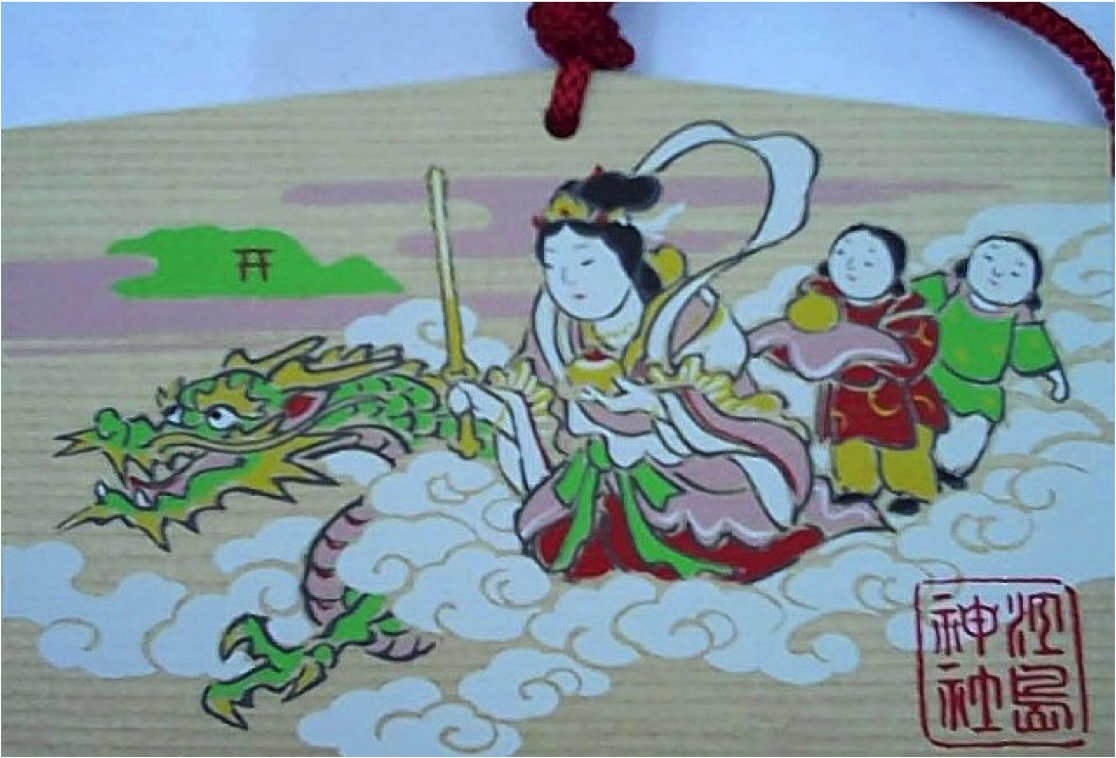
Benzaiten votive tablet. Copyright Mark Schumacher. http://www.onmarkproductions.com/html/benzaiten-sanctuaries.html#Enoshima
Blessing of Knowledge
Waichi Sugiyama was a man born into a samurai family in 1610. He became blind at a young age so he became an acupuncturist, one if the careers deemed most suitable at the time given his condition. After some time, he visited the shrine at Enoshima to seek Benzaiten's blessing to increase his skills. He fasted for three weeks in a cave. As he emerged at the end of his fast, he tripped over a stone and a pine needle inside a bamboo tube lodged into his leg. He was inspired by how the tube helped the needle to fall at such an accurate angle into his skin. He then implemented the technique into his own practice using a small tube to improve the precision of his needles. Other acupuncturists adopted his technique given its success and the method spread across Japan. He is considered the father of Japanese acupuncture and acted as healer to Shogun Tokugawa Tsunayoshi. He credited the goddess Benzaiten with having given him the insight. He donated a pagoda and nearly fifty mileposts on the road to Enoshima in her honor. To keep his healer close at hand, the shogun commissioned a mini shrine to be built at Sugiyama's home so that he could honor Benzaiten without the need to travel.
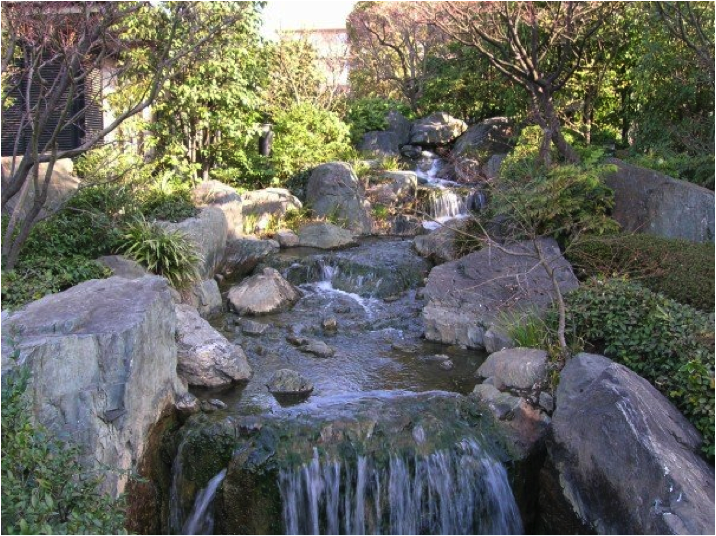
Flowing water at a temple in Tokyo. Used with permission from Jason Blood.
Mini Rituals and Devotions
- Meditate while listening to lute music or flowing water
- Wear jade, pearl, or moonstone for wish granting
- Write your intentions to Benzaiten on a piece of white paper and fold it to look like a snake. Burn the paper to send your intention
- Carry fabrics that resemble dragon scales to bring wealth
- Lovers can write their names or a love note on a pink tablet and ring a bell, as done in Enoshima, to bring love
- Drink epimedium tea and ask the goddess to bless your studies
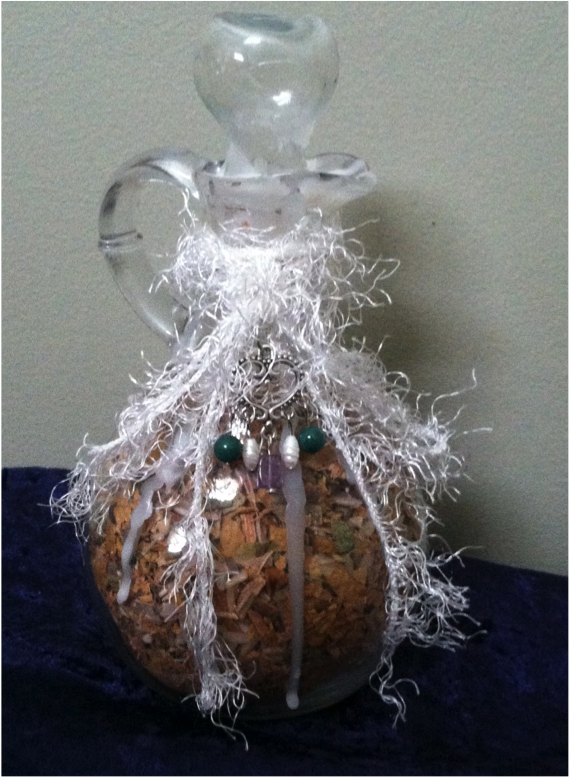
Blessings of Benzaiten Witch Bottle by Diana
Ritual Recipes
- Prosperity incense
- 2 spoons of frankincense
- 1 spoon citron
- 1 spoon lemon balm
- Prosperity oil
- 1 drop cinnamon oil
- 2 drops nutmeg oil
- 1/4 cup of carrier oil (such as olive)
- Blessings of Benzaiten Witch Bottle
- Honeysuckle flowers
- Basil
- Cedar
- Rice
Place the herbs together in a clear glass bottle. Once the bottle is full, seal the bottle shut with white wax. Decorate the bottle with lucky charms such a gemstone or a key. Hold the bottle and visualize the blessing that you would like Benzaiten to bring to your life.
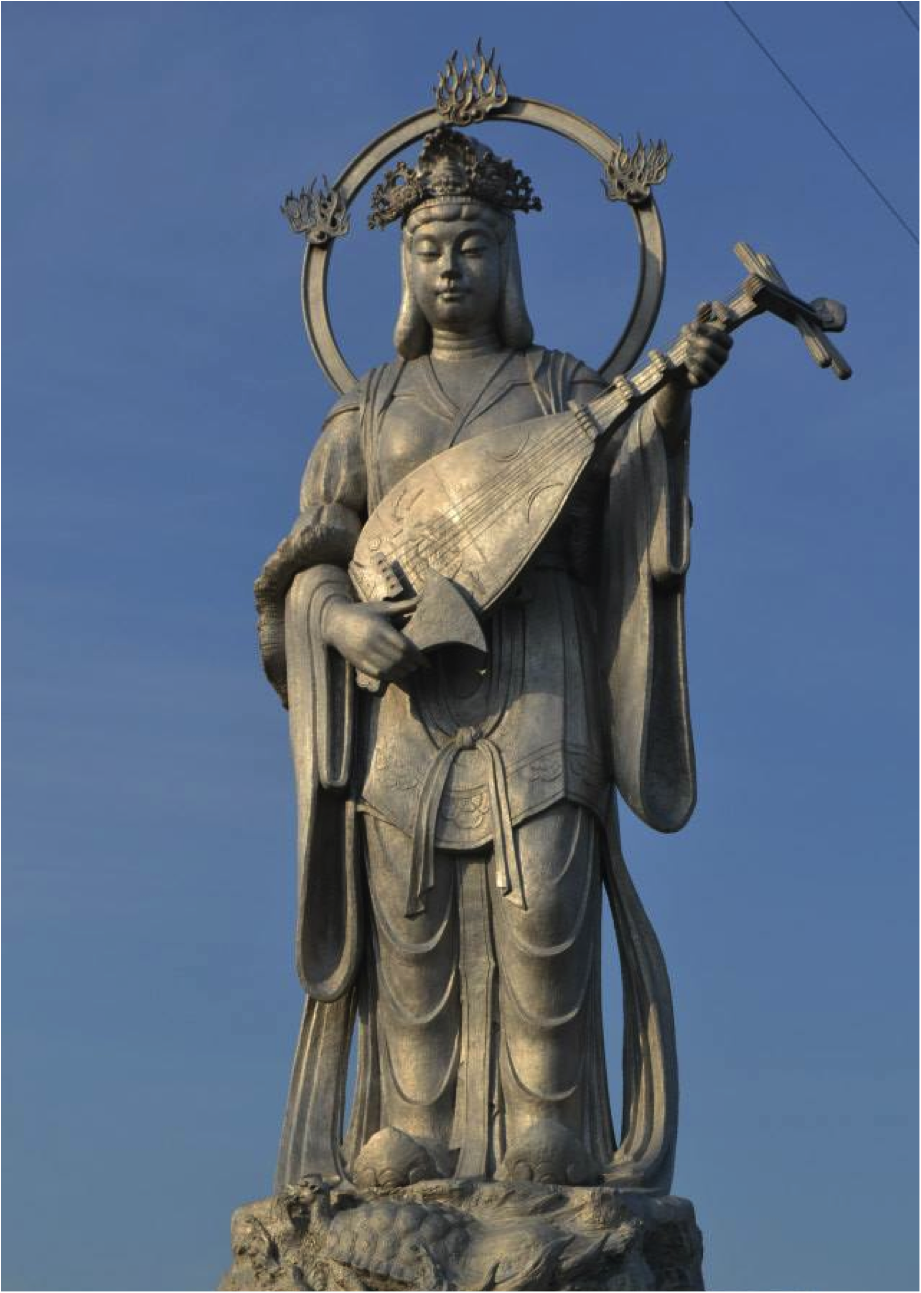
Benzaiten statue in Imizu, Japan. Photograph taken by Lugus Talhathier. Used with permission.
Benzaiten Candle Ritual for Prosperity
Inspired by practices at the shrine in Kamakura. Best done during celebration of the New Year or days associated with prosperity.
Tools:
- 2 Goddess candles: 1 to represent Benzaiten (white works best) and another to represent an animal associated with her with which you feel close (dragon, snake, fox, or turtle)
- 1 candle to represent yourself
- 1 candle to represent wealth & prosperity (green or brown)
- Salt water or another sacred water of your choice
- Money (or symbol of money such as a checkbook or resume)
- Incense burner
- Incense for prosperity (substitute: clover, pine, or bergamot)
Place candles in each of the four corners of the altar in front of you, with a goddess candle in each of the corners farthest from you. The personal candles should be placed to the closest corner to your left, and the intent candle should be placed in the right corner nearest to you. Place incense burner and money in the center of your altar. Light the candles and invoke the goddess Benzaiten. Meditate on your blessings on the last year and envision yourself having the prosperity you desire in the upcoming year. Anoint the money with salt water. Thank the goddess for her many blessings.
References:
http://www.asahi-net.or.jp/~QM9T-KNDU/enoshima.htm
http://www.buddhist-artwork.com/html/benzaiten-statues.html
Cunningham, S. (2007). The Complete book of incense, oils, and brews. Woodbury, Minnesota: Llewellyn Publication.
Cunningham, S. (2006). Magickal herbalism: The secret craft of the wise. Woodbury, Minnesota: Llewellyn Publication.
http://darumamuseumgallery.blogspot.com/2010/06/benten-benzaiten.html
https://www.etsy.com/shop/LaPetiteMascarade
http://www.fofweb.com/History/MainPrintPage.asp?iPin=ENB065&DataType=Ancient&WinType=Free
http://www.japan-talk.com/jt/new/benzaiten
http://knbutt.blogspot.com/2013/04/benzaiten-and-bay-isle.html
http://www.kouyaji.jp/frmShichifukujin.aspx
http://www.onmarkproductions.com/html/benzaiten.shtml
http://www.onmarkproductions.com/html/benzaiten-sanctuaries.html
http://www.onmarkproductions.com/html/seven.shtml
Stein, D. (1990). Casting the circle: A women's book of ritual. Freedom, California: The Crossing Press.
http://talhathier.deviantart.com/
Telesco, P. (1998). 365 Goddess: A daily guide to the magic and inspiration of the goddess. San Francisco, California: HarperSanFrancisco.
Return to The Goddess Gallery






